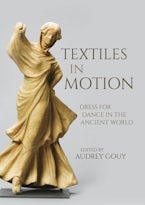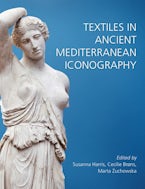Wearing the Cloak contains nine stimulating chapters on Roman military textiles and equipment that take textile research to a new level. Hear the sounds of the Roman soldiers' clacking belts and get a view on their purchase orders with Egyptian weavers. Could armour be built of linen? Who had access to what kinds of prestigious equipment? And what garments and weapons were deposited in bogs at the edge of the Roman Empire? The authors draw upon multiple sources such as original textual and scriptural evidence, ancient works of art and iconography and archaeological records and finds. The chapters cover - as did the Roman army - a large geographical span: Egypt, the Levant, the Etruscan heartland and Northern Europe. Status, prestige and access are viewed in the light of financial and social capacities and help shed new light on the material realities of a soldier's life in the Roman world.
1. Dressed for the occasion: Clothes and context in the Roman Army (Michael Alexander Speidel)
2. Purchase orders of military garments from papyri of Roman Egypt (Kerstin Droß-Krüpe)
3. Clothing supply for the military: a look at the inscriptional evidence (Jinyu Liu)
4. The Roman Military Belt (Stefanie Hoss)
5. Linen-clad Etruscan Warriors (Margarita Gleba)
6. Military textiles in weft and warp twining: fragments probably of pteryges from Masada, Israel, a greave from Dura-Europos, Syria, and several slings (Hero Granger-Taylor)
7. A Late Roman Painting of an Egyptian Officer and the Layers of its Perception: On the Relation between Images and Textile Finds (Annette Paetz gen. Schieck)
8. Warrior Costumes in Iron Age Weapon Deposits (Susan Möller-Wiering)
9. Painting a Reconstruction of the Deir el-Medineh Portrait on a painted Shroud and other Soldiers from Roman Egypt (Graham Sumner)












